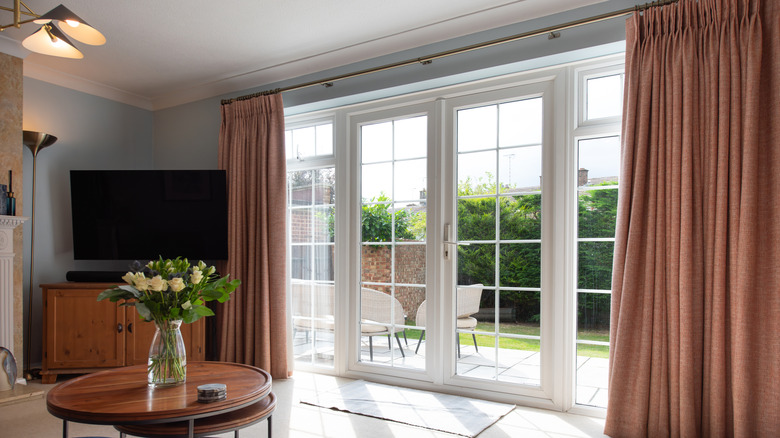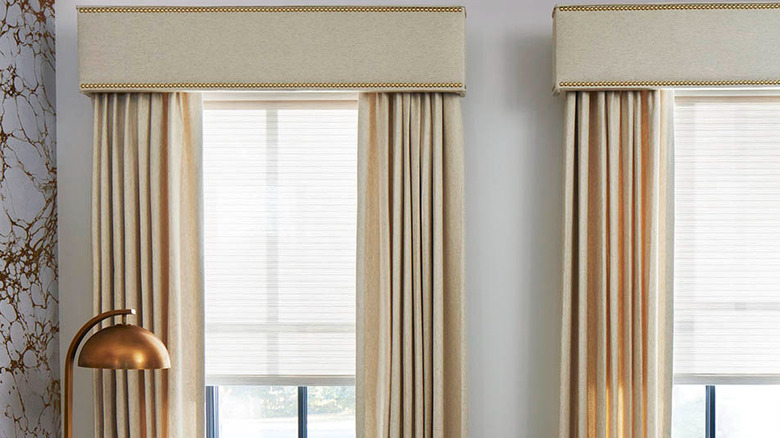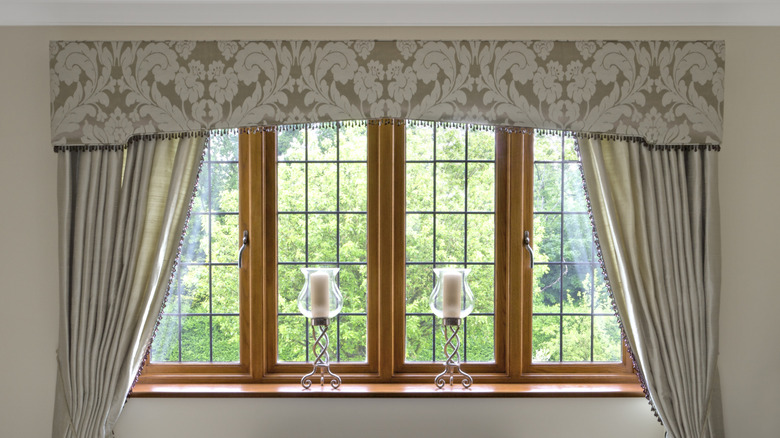The Differences Between Cornices And Valances And Which Are Right For Your Home
The way you dress your windows can completely transform a room, and stylish window treatment ideas often tie all other design elements together. But things can get a little tricky when it comes to decorating the top of your windows, especially if you dislike leaving this part, and the hardware it houses, bare. Often, the choice boils down to two options: a cornice and a valance. Both seem similar at first glance, since they hide window hardware components like the pole; however, each solution offers a distinct style. Understanding the differences between cornices and valances can help you decide which one best complements your space.
To put it simply, a cornice is a solid and often wooden fixture that covers the top of a window, while a valance is a soft fabric that drapes across the top, concealing the curtain rod. The choice really depends on your home's overarching interior decor theme, the feel you want to create, and how permanent you want the design to be. For example, a cornice is the way to go if you prefer a refined feel. Meanwhile, a valance is the better option if you want to adorn the top of the window with something that's softer, more flexible, and easy to swap out. There is really no right or wrong answer, and the decision comes down to what suits your style, space, and personal preference.
Cornices: formal and bold
Choosing cornices is the route you might want to take if you're going for a more structured design. These fixtures are usually made of wood or fiberboard and can be upholstered or painted to blend seamlessly with your drapery or the surrounding design elements. Opting for cornices brings a bold presence to your space. They suit contemporary settings for their clean lines. These include living rooms, dining areas, offices, and other formal areas where rigid is the name of the game. They are also excellent at hiding curtain rods and blinds and can even create the illusion of higher ceilings by drawing the eye upward.
That being said, cornices are not as versatile as valances. They don't allow for as much flexibility when it comes to updating your decorations, since they are fixed in place. So, a cornice might not be the best choice if you enjoy changing your interior design frequently.
Valances: more relaxed and versatile
On the other end of the spectrum lie the gentler and more casual valances. These comprise fabric that drapes across the tops of windows to add warmth and texture to your space. Unlike the more rigid cornices, valances can be styled in a wider range of ways. They come in a greater assortment of patterns and colors and can be ruffled or pleated, among other options. This versatility makes valances a great choice if you like switching up your interior aesthetic often.
Valances are not going out of style any time soon, and work best in spaces where comfort and coziness are the priority. Think bedrooms, kitchens, and living areas, where they help the room feel less formal and more welcoming. A fabric valance can soften the overall look of your space, especially if it has a lot of hard surfaces, like tile floors, countertops, or metal fixtures.
But since they're made of fabric, valances easily gather dust and need regular cleaning. They can also look outdated if they aren't styled well, so it's best to know and avoid the patterns that can make your curtain valances look dated. Valances may not also be the best option if you are looking to block out light.


